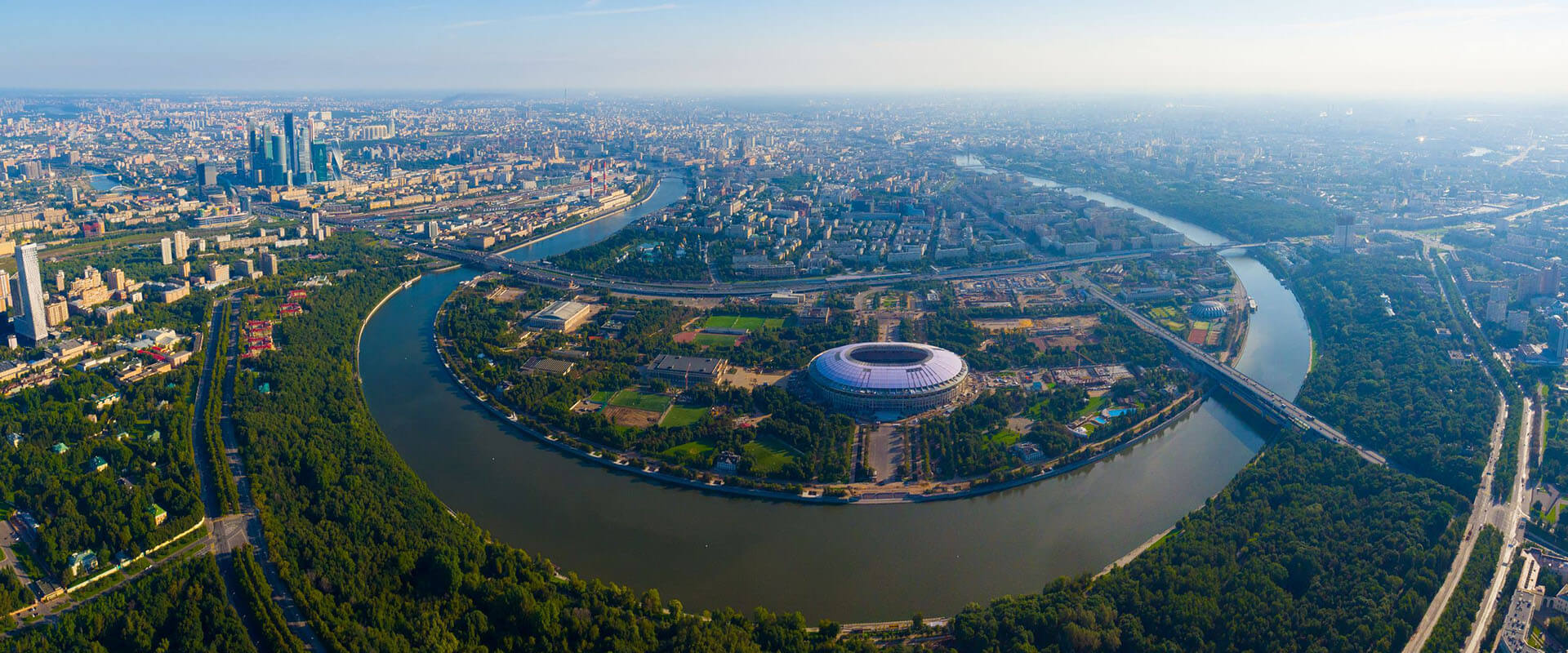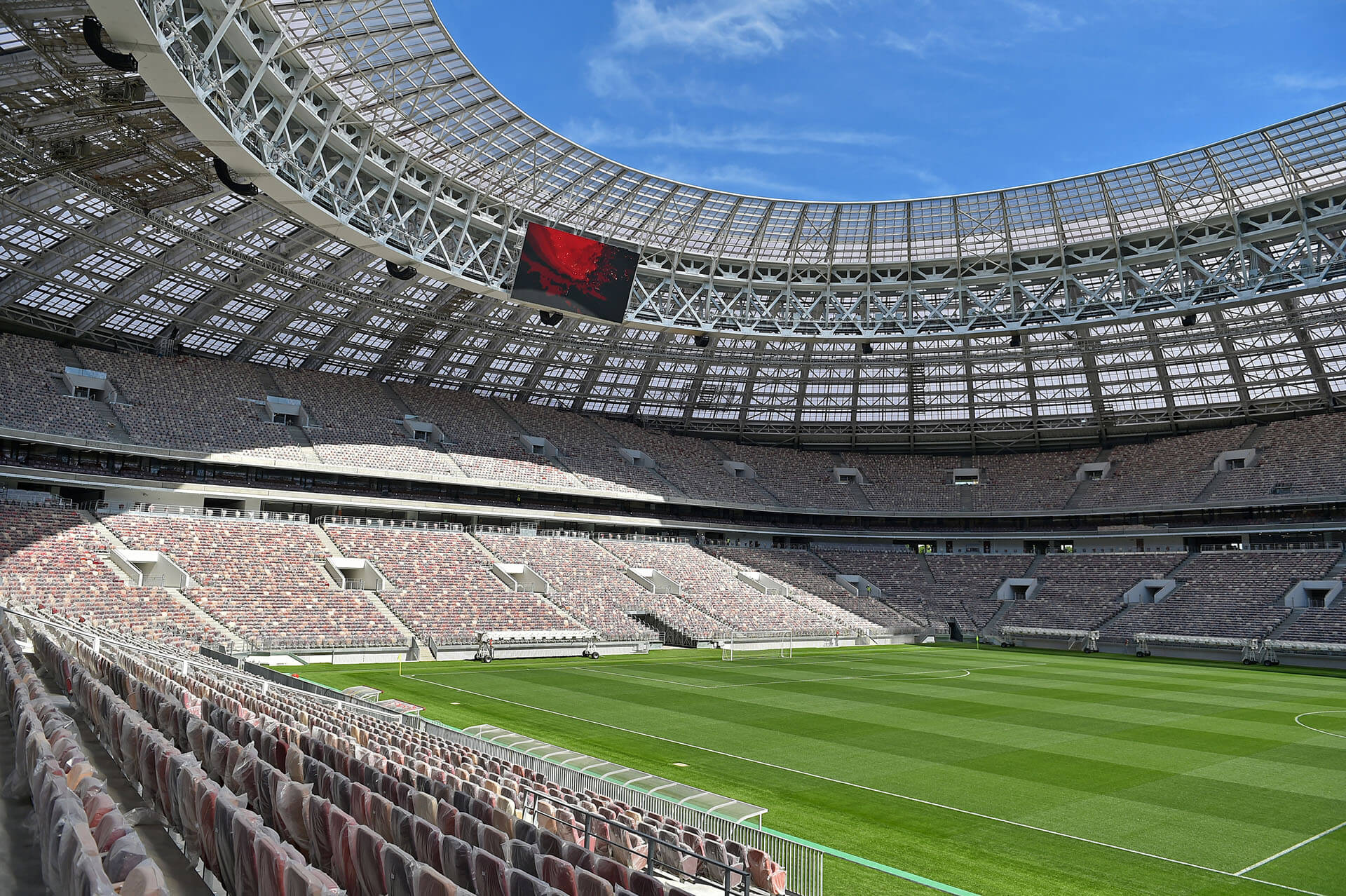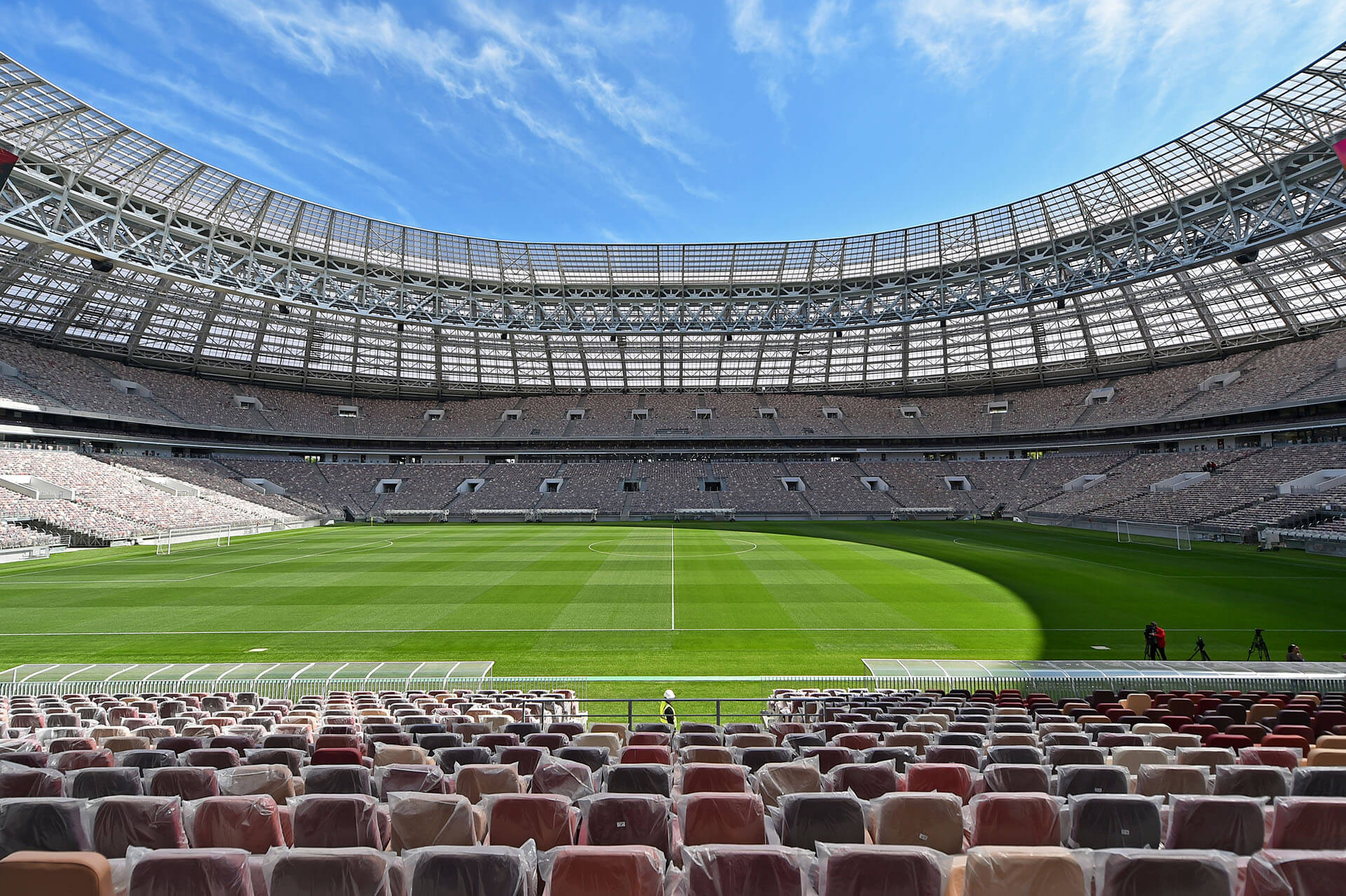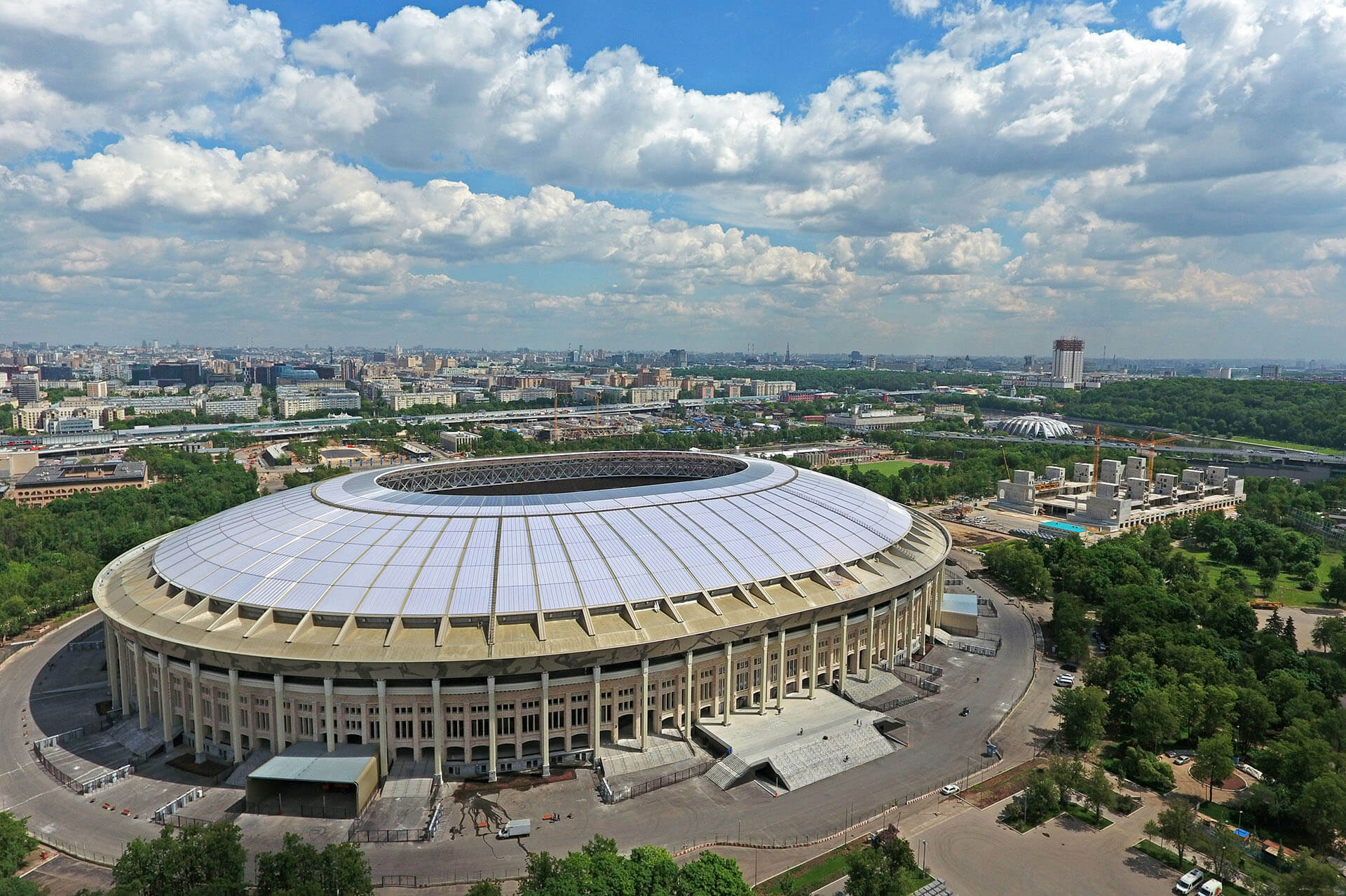
Grand Dame
Luzhniki Stadium in Moscow
History
Luzhniki Stadium is the main stadium for Russia 2018. It was originally built to host the first nationwide summer Spartakiad in 1956. The stadium was originally built on the bank of the Moskva River opposite the Vorobyovy Gory landmark in 1956. Until 1991, it used to be known as the Lenin Central Stadium. It has been the Soviet Union’s and Russia’s largest stadium with a capacity of up to 101,000 seats.
The stadium hosted both the opening and the closing ceremonies of the 1980 Summer Olympics, the first Olympic Games in the country’s history. The stadium also hosted a multitude of other major sporting and cultural events, including world championships in ice hockey, athletics and rugby and concerts featuring some of the world’s greatest musicians. Throughout this period, however, football has played a special role, with the stadium having hosted more than 3,000 matches.
In 1996–1997, the stadium got an upgrade and a complete roof, earning a 5‑star ranking from UEFA and the right to host the UEFA Cup final in 1999 and the UEFA Champions League final in 2008. Luzhniki Stadium is the venue for most of the matches played by the Russian national football team, and at various times it has also served as the home stadium for Moscow’s Spartak, CSKA and Torpedo clubs.
Design
Work to rebuild Luzhniki Stadium for Russia 2018 began in 2013. One of the crucial aspects of the project was preserving the historical façade of the stadium, which has become one of Moscow’s true landmarks.
Inside, the stadium was totally refurbished: the athletics track was removed, two extra tiers were added and the capacity was increased from 78,000 to 80,000. As part of the reconstruction, the stands were moved closer to the pitch following the removal of the athletics track, the pitch itself was replaced with the natural grass surface, and the angle of the now two-tier stands was changed, while the roof became larger by 14m and now boasts a 30,000 sq m LED screen. There are two 16.8x9.6m media screens facing each other, one in the South and one in the North section of the stands, clearly visible from any seat. There are now four restaurants and over 200 food stands. The sports complex area totals over 159 hectares while the stadium’s entire post-reconstruction area including the stands is 221,000 sqm.
Address
ул. Лужники 24, Moskva Russland, 119048
Aerial view
Thank you, Google!
Opening
1956, 1980, 1997, 2017
Spectator seats
80,000
Images
Videos





